* Text fwd from nukefreepacific
Pacific News Center
Live Fire on Farallon This Coming Week
Written by News Release Saturday, 22 January 2011 07:37
Guam - The Air Force will conduct training on the island of Farallon de
Medinilla this coming week from Tuesday January 25 through Friday January
28.
The dates and times are:
* Jan. 25 from 10:30 a.m.-6 p.m.
* Jan. 26 from 9 a.m.-6 p.m.
* Jan. 27-28 from 10:30 a.m.-6 p.m.
The general public especially fisherman, commercial pilots and marine tour
operators are advised to stay clear from the area during the times and
dates indicated.
The general location of the training on the island of Farallon de
Medinilla training area will be on a 10 nautical mile radius on all
quadrants. Farallon de Medinilla plays a special and unique role in
national defense because its location provides access frequency that
supports established training requirements. In addition, the air and sea
space in the Farallon provides sufficient room for the many different
attack profiles necessary to replicate training opportunities in the
Commonwealth of the Northern Mariana Islands.
--------------
Farallon de Medinilla (FDM)
16° 01' north latitude, 146° 04' east
http://www.globalsecurity.org/military/facility/farallon-de-medinilla.htm
Environmentalists want the U.S. military to halt bombing on Farallon de
Medinilla because they say it endangers wildlife. But officials from
nearby Saipan don’t want the range to close because it would mean a loss
of millions of dollars generated by port visits.
The Farallon de Medinilla Target Range is the Pacific Fleet’s only
U.S.-controlled range available for live-fire training for forward
deployed naval forces. Farallon de Medinilla plays a special and unique
role in national defense. Its location provides access frequency that
supports established training requirements. In addition, the air and sea
space in the Farallon provides sufficient room for the many different
attack profiles necessary to replicate training opportunities in the
Commonwealth of the Northern Marianas Islands [CNMI]. American fighter
pilots must maintain capability and proficiency in precision-guided arms
and specific target engagement. These are perishable skills that require
frequent access to high fidelity, scenario-based targets. Accessibility to
the Farallon de Medinilla supports these requirements.
The Farallon de Medinilla, an uninhabited 200-acre island, stands about
280 feet above sea level and its’ size is approximately 3 miles by 1/2
mile. The Farallon de Medinilla Target Range is located about 150 miles
north of Guam and is leased from the Government of the Commonwealth of the
Northern Marianas Islands. The range has been used since 1976 under an
agreement between the United States and the Commonwealth of the Northern
Mariana Islands. Farallon de Mendinilla is classified as public land that
is under lease by the US military from the Commonwealth. The Commonwealth
of the North Marianas has a lease agreement with the US military that
allows use of the island until 2075.
The Commonwealth of the Northern Marianas Islands -- 17 major islands
north of Guam -- became a self-governing commonwealth in union with the
United States following the termination of the former Trust Territory of
the Pacific Islands, which once included the Federated States of
Micronesia, the Marshall Islands and Palau. The people of the Northern
Marianas are American citizens.
During the peak of Vietnam War operations, ordnance delivered on the
island was estimated at 22 tons per month. This consisted primarily of
air-dropped, 500 and 750-pound bombs. Also included in the total monthly
figure were approximately 60 rounds of three-inch ammunition from ship
guns.
Farallon de Medinilla enables forward-deployed airwing and surface units
in Japan to conduct two and three unit level training evolutions and one
large-scale exercise per year. Without this range, live-fire training
would be contingent upon access to non U.S.-controlled ranges and airwing
and surface unit readiness would decline to “not ready” status within six
months. The range is used about five days each month by the Navy, Marines
and Air Force, and provides training opportunities unmatched in the
region.
The Navy had wanted to expand activities to include ground based mortar,
artillery, and anti-tank training. However, the new training land use
proposed cannot he implemented, as personnel are no longer allowed to land
or move about on the island due to the presence of highly sensitive,
unexploded cluster bombs observed in 1996.
The Navy engaged in gunnery practice during May 1997, and aerial
bombardment from July 21 to August 1, 1997, on FDM, CNMI. The purpose of
the activity was to allow Navy carrier aircraft and ships to participate
in aircraft carrier support training including surface gunnery and bombing
practice. Ships assigned to the Seventh Fleet conducted gunnery practice
by firing an estimated 200 5/54 live rounds. The ammunition type for the
5/54 was high explosive with controlled variable time fused rounds that
produce fragmentation air burst as well as high explosive point
detonations. Navy fighter /attack aircraft assigned to the Carrier Air
Group practiced delivery of live ordnance, consisting primarily of MK-80
series iron bombs which are designed to explode on impact. A variety of
other ordnance were also used. An estimated total of 135 MK-82 live 500
pound (#) bombs, 50 MK-83 live 1000# bombs, 36 MK-84 live 2000# bombs, 180
BDU-4S inert bombs, and 984 MK-76 inert bombs were delivered by aircraft.
Two global power missions successfully deployed to Andersen Air Force
Base, Guam, 11 February 1999, demonstrating once again the US Air Force's
ability to strike targets across the globe from its home bases. Two B-2
Spirits from Whiteman AFB, Mo., and two B-52s from Minot AFB, N.D.,
deployed 09 February 1999, flying nearly 20 hours across the international
date line to targets at the Farallon de Medinilla Island Bombing Range in
the Pacific Ocean. The B-2s dropped live 2,000-pound bombs and the B-52s
dropped BDU 44s, which are training bombs. After completing their mission,
the aircraft landed at Andersen. The B-2s, which were on the runway for
less than an hour while they were refueled and crews were switched,
returned to make a second strike at the Farallon bombing range and then
flew home to Whiteman. One of the B-52s departed from Andersen to the 1999
Australian International Air Show and the other B-52 will return home to
Minot.
The 93rd Bomb Squadron deployed to Anderson AFB, Guam, in April 1999 to
participate in exercise Tandem Thrust 99. The primary mission was to
provide friendly and enemy air support for the US Navy. They deployed two
aircraft and 102 personnel to train US and Australian defense force staffs
in crisis action planning and execution for contingency operations whether
at sea, in the air, or ashore. B-52’s dropped bombs on Farallon de
Medinilla. Over 500 M117’s were dropped by the B-52s. Each day the
aircraft were loaded internally and externally with the 750 pound bombs to
be dropped 3000 feet over Farallon de Medinilla.
The island is an important nesting site for more than a dozen species of
migratory birds, including some that are endangered. Farallon de Medinilla
hosts colonies of great frigatebirds; masked, red-footed, and brown
boobys; red- and white-tailed tropicbirds; white and sooty terns; brown
and black noddys; and other species of migratory seabirds. The island is
the largest known nesting site for masked boobies in the Mariana and
Caroline Islands.
The 1918 Migratory Bird Treaty Act prohibits harm to migratory species
without a permit from the U.S. Fish and Wildlife Service. In 1996 The Navy
asked the Service for a permit to use the island as a range, but was
refused. The Navy continued to use the range, saying the treaty did not
apply to federal agencies. Fish and Wildlife surveys have shown that birds
are being killed when the military hits island with bombs, missiles,
rockets, naval guns and other weapons. The Navy has said targets are
placed away from primary bird habitat, and the Navy is budgeting $100,000
annually to enhance bird habitats on neighboring islands. The Navy has
participated in two environmental impact studies, in 1975 and 1999,
regarding military activities on the island.
The Pacific Fleet’s ability to conduct training on Farallon de Medinilla
is subject to litigation brought by an environmental group seeking to stop
live-fire training on the grounds that some migratory, but not necessarily
endangered or threatened, birds are harmed in violation of the 1918
Migratory Bird Treaty Act. The Earthjustice Legal Defense Fund, formerly
the Sierra Club, argued the lawsuit on behalf of the Center for Biological
Diversity, a nonprofit New Mexico corporation. The suit claims the
Migratory Bird Treaty Act applies to the Navy and Defense Department and
its use of the range. This lawsuit was filed on 21 December 2000 by the
Earthjustice Legal Defense Fund in Washington, following a decision by
Federal Court in the District of Columbia which declined to follow
precedent and applied the 85-year-old act to Federal agencies.
--------
hasso i manfayi
Subscribe to:
Post Comments (Atom)

![[URGENT PLEA: In Update] EMERGENCY in GANGJEONG Since AUG. 24, 2011](http://2.bp.blogspot.com/-3iz8k-USXVY/TlmRYhhIYtI/AAAAAAAAL2c/9dbF85ZIkIs/s227/jejusit.jpg)



![[Solidarity from Japan for the Jeju] 253 individuals and 16 groups/organizations](http://2.bp.blogspot.com/_gnM5QlRx-4c/TR_YeNVE1yI/AAAAAAAAHWQ/ARyf6oQN0S0/S227/jeju_12_10j.jpg)
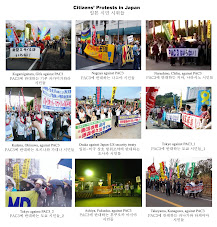
![[Translation] Korean organizations' statement: Immediately cancel the joint ROK-US drill Nov 26](http://2.bp.blogspot.com/_gnM5QlRx-4c/TPOE8VKXHFI/AAAAAAAAGlM/8lryt-8sFjc/S227/1.jpg)
![HOT! [Hankyoreh Hani TV] Beneath the Surface: the investigation into the sinking of the Cheonan](http://4.bp.blogspot.com/_gnM5QlRx-4c/TOI83qht8aI/AAAAAAAAGXU/22SW6Q5ntV8/S227/HaniTV%2BCheonan.gif)

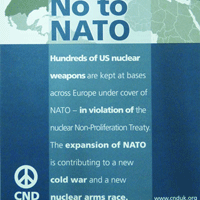

![[Translation]Statement against illegal inspection and unjust lay-off by the Kunsan USAFK!(Nov_2010)](http://4.bp.blogspot.com/_gnM5QlRx-4c/TOPLsVkZMqI/AAAAAAAAGZs/3YnnckIyAaY/S227/gunsan%2Bprotest.gif)
![[Translation] Korean organizations' statement against dispatching special force to the UAE on Nov.](http://4.bp.blogspot.com/_gnM5QlRx-4c/TOP95zHXlCI/AAAAAAAAGak/E0Ug1XtUFfM/S227/antiwarpeace.jpg)
![[Translation] Stop, Joining MD!: South Korean activists' statement and writing on Oct. 25, 2010](http://3.bp.blogspot.com/_gnM5QlRx-4c/TOP7Es4_2sI/AAAAAAAAGac/eWVMPD-U4p0/S227/StopMD.jpg)
![[In Update] People First, NO G-20 (Nov. 6 to 12, Korea)](http://2.bp.blogspot.com/_gnM5QlRx-4c/TJd53XBzHlI/AAAAAAAAFQo/ldO9JPE3eqo/S227/left21_G20.jpg)
![[International Petition] Stop US helipad plan in Okinawa to save great nature](http://4.bp.blogspot.com/_gnM5QlRx-4c/TKC2AHRNzBI/AAAAAAAAFUo/yGWXODTw_uM/S227/yanbaru_w.jpg)

![[Global Network] against the first launch of Quasi-Zenith Satellite, Japan, on Sept. 11, 2010](http://4.bp.blogspot.com/_gnM5QlRx-4c/TIowa1boy4I/AAAAAAAAFDI/82rAi98uq-c/S227/Qzss-45-0_09.jpg)

![[In update] Some collections on the Koreans’ protests against the sanction & war on Iran](http://4.bp.blogspot.com/_gnM5QlRx-4c/TJMvke6t8zI/AAAAAAAAFO4/tamQ8LUnOOA/S227/No+Sanction+on+Iran.jpg)
![[Three International Petitions] to End the Korean war and peace treaty(or peace resolution)](http://1.bp.blogspot.com/_gnM5QlRx-4c/THef7bzWxYI/AAAAAAAAE44/wwdzSDfYhdw/S227/border.jpg)
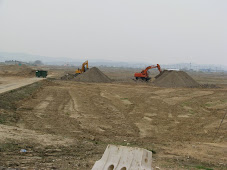


![[Collection of Documents] No Base Learning and Solidarity Program_Korea(June 14 to 20, 2010)](http://1.bp.blogspot.com/_gnM5QlRx-4c/TCTvVuN8NeI/AAAAAAAAEek/8vBJVaHdk10/S227/No-Base-banner.jpg)
![Site Fwd:[John Hines] A U.S. Debate coach’s research trip on the Issues of Korea](http://3.bp.blogspot.com/_gnM5QlRx-4c/TINCO36mzzI/AAAAAAAAE_w/Rds12NcBOXM/S227/Jeju-Peace-Tour.jpg)


![[News Update] Struggle Against the Jeju Naval Base since Jan. 18, 2010](http://1.bp.blogspot.com/_gnM5QlRx-4c/S1vvWaP25uI/AAAAAAAACkg/QvpW1tgOlKM/S226/scrum1.jpg)


![[Urgent] Please spread the Letter!: There was no Explosion! There was no Torpedo! (May 26, 2010)](http://4.bp.blogspot.com/_gnM5QlRx-4c/S_9JmsKEU7I/AAAAAAAAEP8/sAWjSPqxzUI/S227/grounded.jpg)
![Text Fwd: [Stephen Gowans]The sinking of the Cheonan: Another Gulf of Tonkin incident](http://1.bp.blogspot.com/_gnM5QlRx-4c/TAL_FtYKQ-I/AAAAAAAAERE/NEEMijiEcRM/S227/lee-myung-bak.jpg)
![[Japan Focus]Politics in Command: The "International" Investigation into the Sinking of the Cheonan](http://1.bp.blogspot.com/_gnM5QlRx-4c/TBMJ2syJzyI/AAAAAAAAEZU/uTYZccU5vyk/S227/wen_jiabao_and_lee_myungbak.png)
![[Japan Focus] Who Sank the SK Warship Cheonan? A New Stage in the US-Korean War and US-China](http://2.bp.blogspot.com/_gnM5QlRx-4c/S_iQ2vE5ZpI/AAAAAAAAEOU/Oo1SPcAe8FE/S227/buoy_map.gif)
![[Updated on 12/13/10] [Translation Project] Overseas Proofs on the Damages by the Military Bases](http://4.bp.blogspot.com/_gnM5QlRx-4c/S-qSj59gPLI/AAAAAAAAEGM/mwjlFtPE-jo/S227/missile.jpg)
![[International Petition] Close the Bases in Okinawa](http://3.bp.blogspot.com/_gnM5QlRx-4c/S8-z3DYNwNI/AAAAAAAADo4/OswTSchK09M/S227/2.jpg)

![[In Update]Blog Collection: No Korean Troops in Afghanistan](http://4.bp.blogspot.com/_gnM5QlRx-4c/SwnlLD9IewI/AAAAAAAAB9E/oUPssnpNidA/S226/No-Troops-to--Afghanistan.jpg)
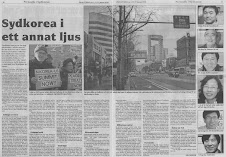

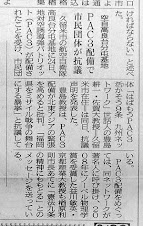

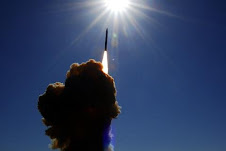






No comments:
Post a Comment